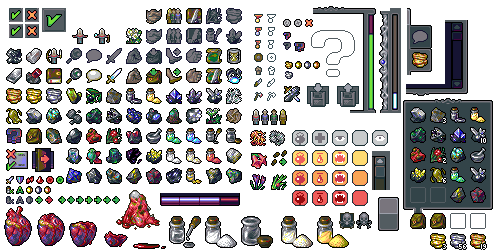
Part 1 - From Blue-Sky to Spreadsheet Specific
The Concept Statement
When designing games, or any endeavor really, you need to come up with the "concept statement" or "elevator pitch"; This is the short answer to the question, "What is your game about?" Whenever I'm explaining SFEOS to people who know nothing about it, I start by saying, "Think Trade Wars (the old 80s BBS game) meets Crypto Assets and you have a decent foundation to build on." If the person is younger than me, they have probably not heard of Trade Wars, so I describe that a bit.
Expanded, the description goes along these lines: In the game the player takes on the role of a starship captain who works with the onboard AI to explore and expand humanities reach into space. The goal of the gameplay is up to each player to determine themselves. They could for example, attempt to become a military or economic powerhouse. They might instead focus on research and exploration. They can choose to go solo or join forces with other players to attempt to accomplish anything they desire. There really are no set limitations on what a player might attempt to do.
The important thing is to get the main points across without overwhelming the listener. If the concept statement resonates with them, you'll know right away and can continue the discussion or move on to other topics.
The Game World (Universe) and History
If it does resonate, you want to be able to describe the genre and feel of the game's setting, and perhaps a little of the history and lore.
In this game, without going into too much detail (Lore Posts will cover the details), the game universe is set in a futuristic setting where humanity attempted to take to the stars as colonial space pioneers and failed along their journey. A sentient AI named SFEOS saved what she could of the species and has worked through a multitude of generations to bring about the continued colonization of the universe, thus assuring the continuation of her charge's future existence.
The Game Interface
If the game is in the ideation phase, you want to describe how the player is going to experience the gameplay. Will it be virtual reality, 3d, 2d, or maybe even text based?
For SFEOS, the game art will be 2d and painterly/realistic. The player will interact with the game through a web user interface that resembles our abstraction of what we think an advanced AI controlled starship interface might be like.
Game and Governance Loops
There are lots of different kinds of "Loops" when you're doing game design. I'll be talking about a lot of them as we work through designing the game, but you should be able to define the big ones easily. Some designers start with a small feature or game mechanic, but for this discussion we are going to start with the overall picture and work our way down into more specific loops as we get closer to spreadsheet specific details in future posts.
The Game's Core Loop
The game industry calls what the player is doing most of the time, the game's core loop. In SFEOS, the core loop consists of the player traveling around the universe (nodes connected by connectors) in their ship. While they travel they are gathering limited resources (cryptographic assets) and probably crafting things (more cryptographic assets) out of those resources, to use or trade with other players. This trading takes place either directly or through the use of space ports that are located throughout the nodes of space. This is the basics of gameplay.
The Player Participation and DAC Governance Loops
Another very important part of the game is the player participation loop; or what we are calling "Proof of Participation". SFEOS is a game of cryptographic assets, that is designed to be ran by a Distributed Autonomous Community (or DAC) of players. There is no game company behind the ownership of SFEOS. It is 100% owned and directed by the players (or will be once it exists). Legacy Gameworks (my indie game company name) only exists to kick things off by designing and developing the initial MVP (minimum viable product) while attempting to grow a community of content creators, designers and developers (i.e. the game's founders) who can eventually be partnering with the DAC to continue the work into the future.
The way the governance is envisioned to function is by distributing participation tokens to its active players (the stakeholders). The stakeholders then get a say in the development of the game.
In a bit more detail the process looks like this; For each 24 hour period that a player completes their available actions (maybe 100 actions per 24 hour period), they will be rewarded with newly minted SFEOS tokens. Each day a percentage of the total minted tokens are deposited into a DAC Budget. The distributed SFEOS tokens allow their owners to vote on how the DAC budget will be spent and thus how the game will continue to be developed, marketed and expanded upon. SFEOS tokens are designed to be tradeable. These tokens along with the DAC budget are designed to allow for a continual self funding mechanism for the game's future.
What's Next?
I hope these posts are helpful to you. It's helping me to stay on target and really think about designing with a systematic approach in mind. I also hope the information will be helpful for future designers and developers who will be joining us in the journey. In upcoming posts we will start to dig down into other loops within the game.
